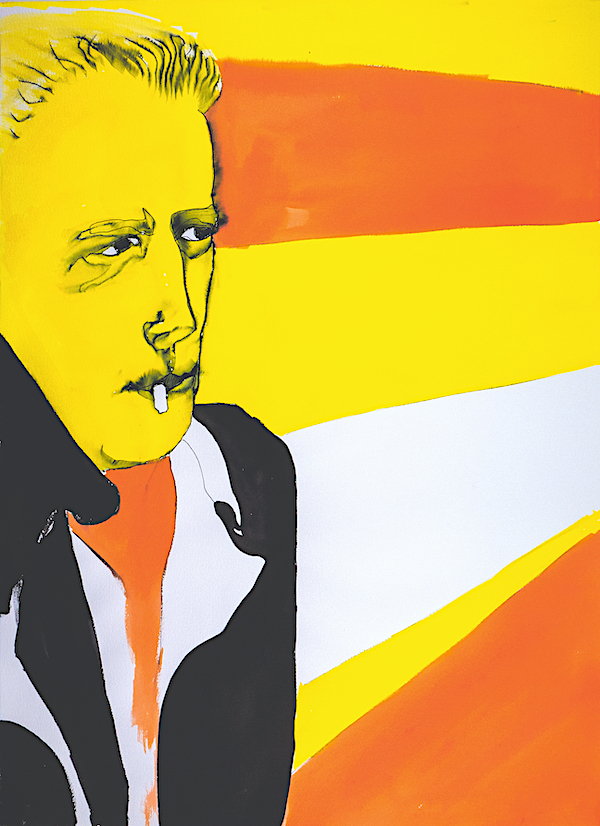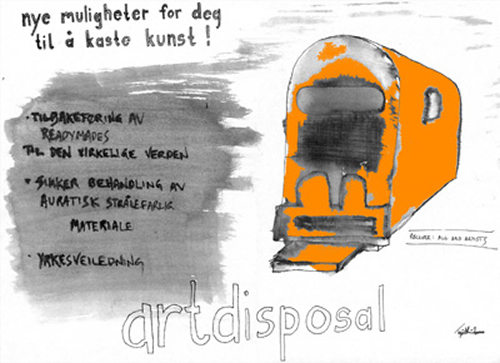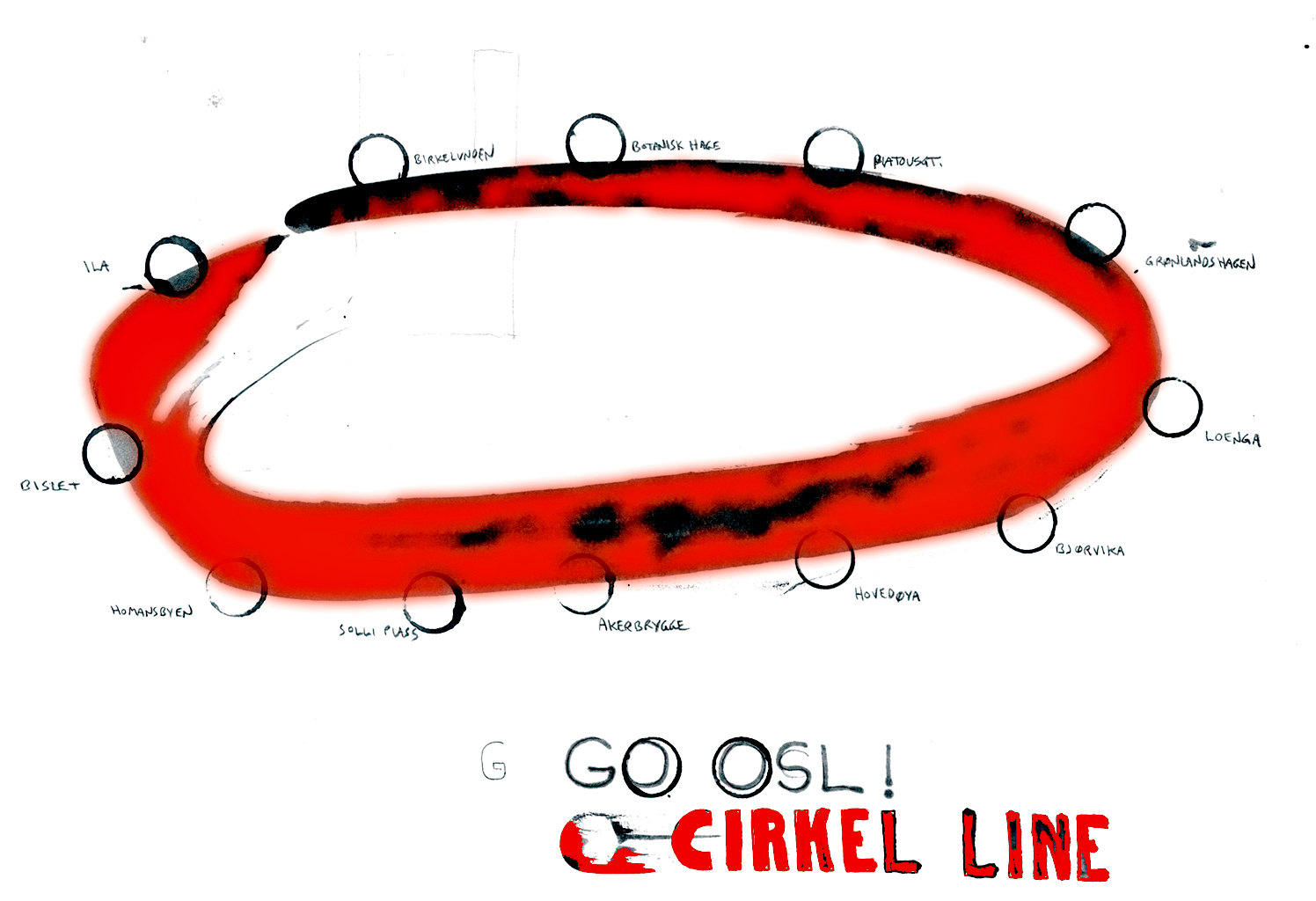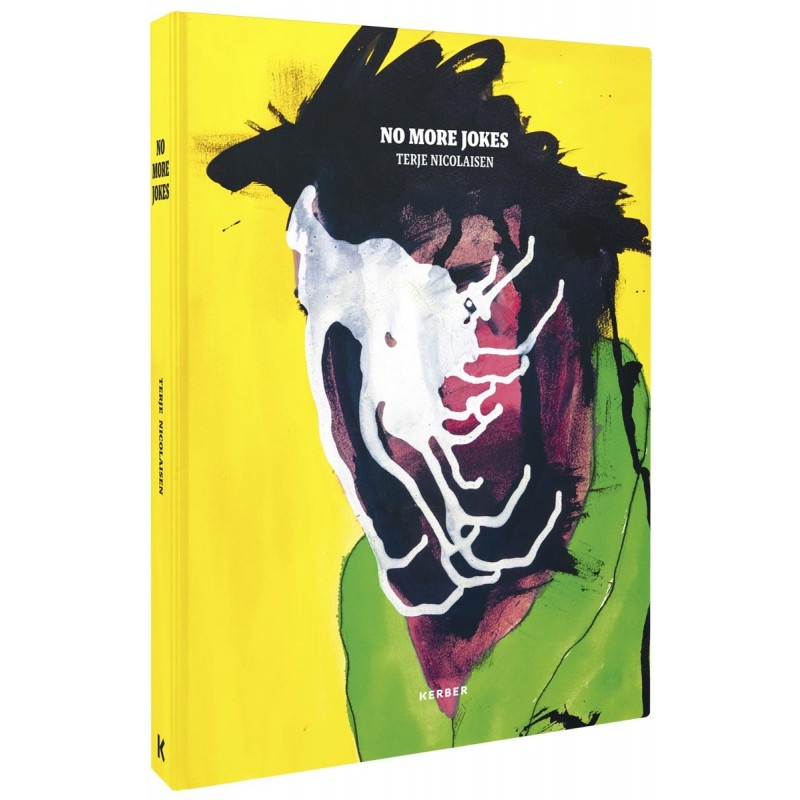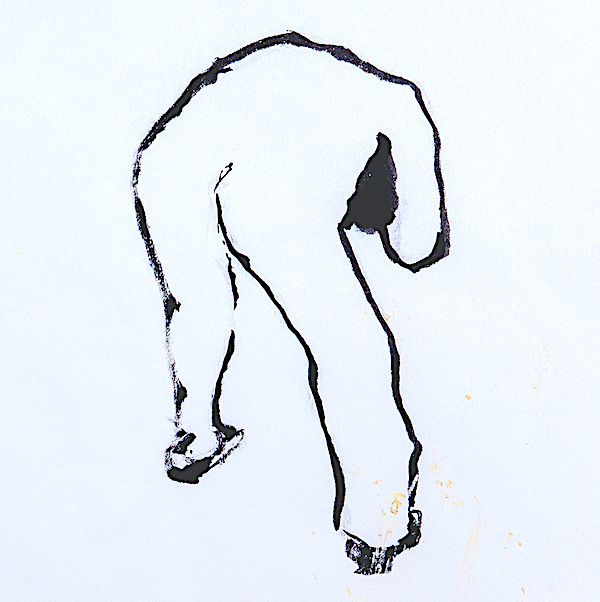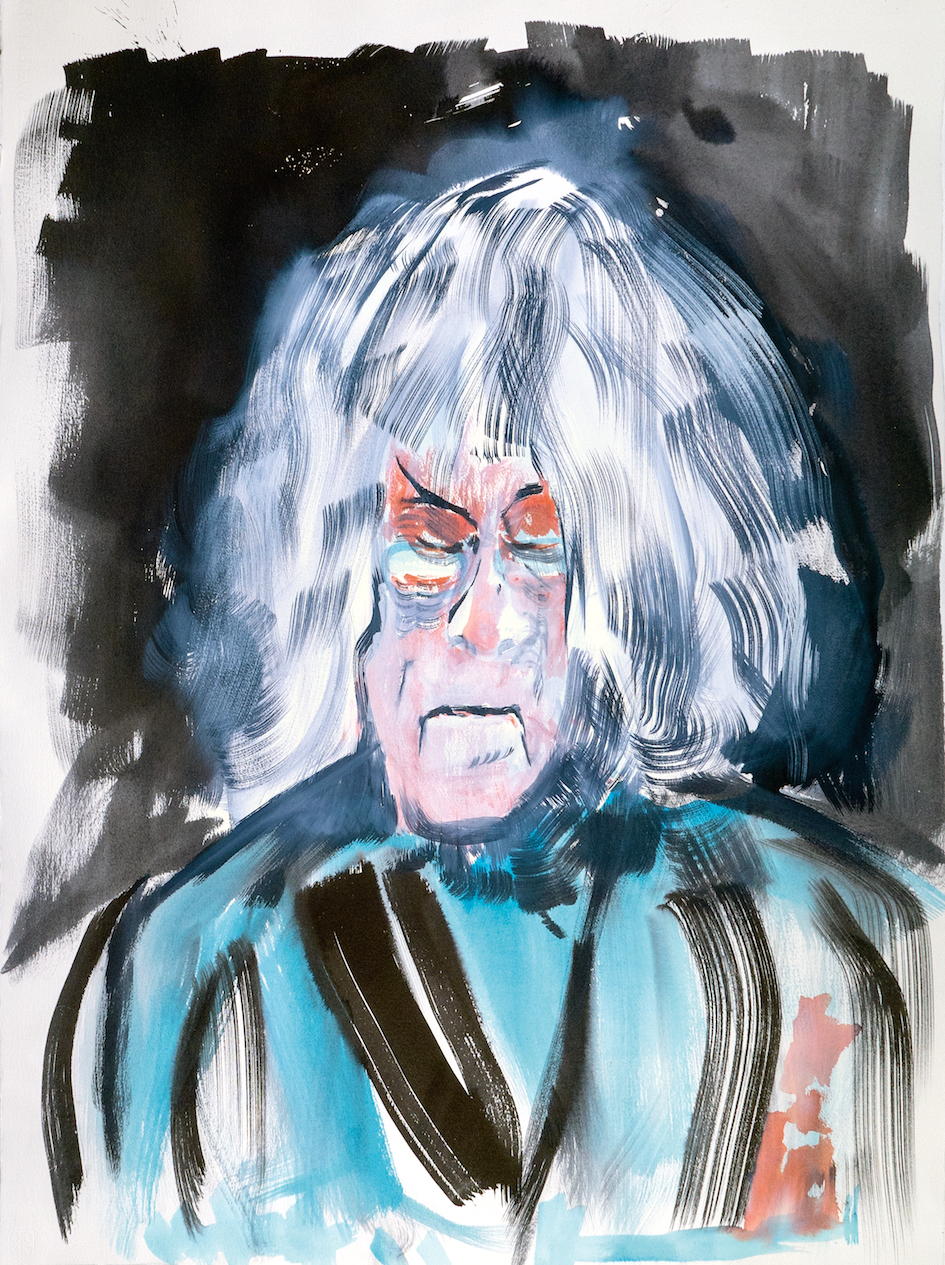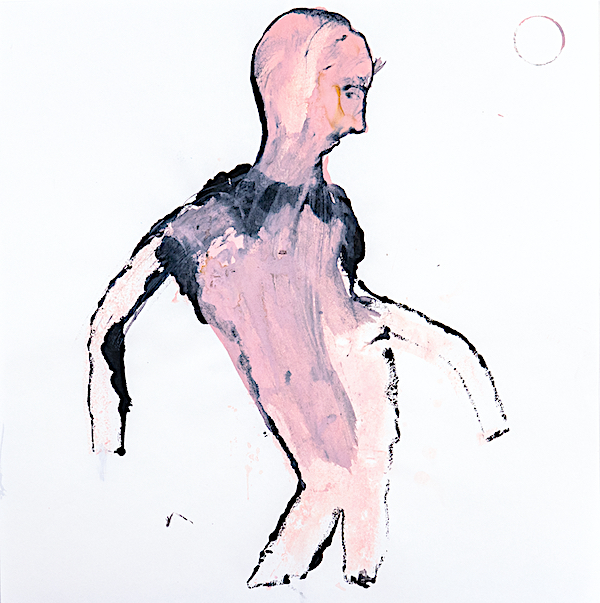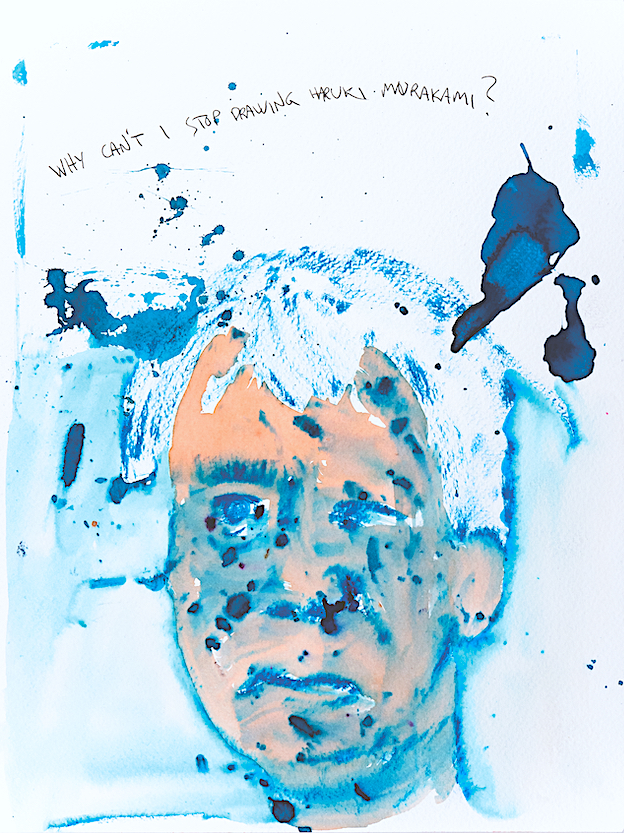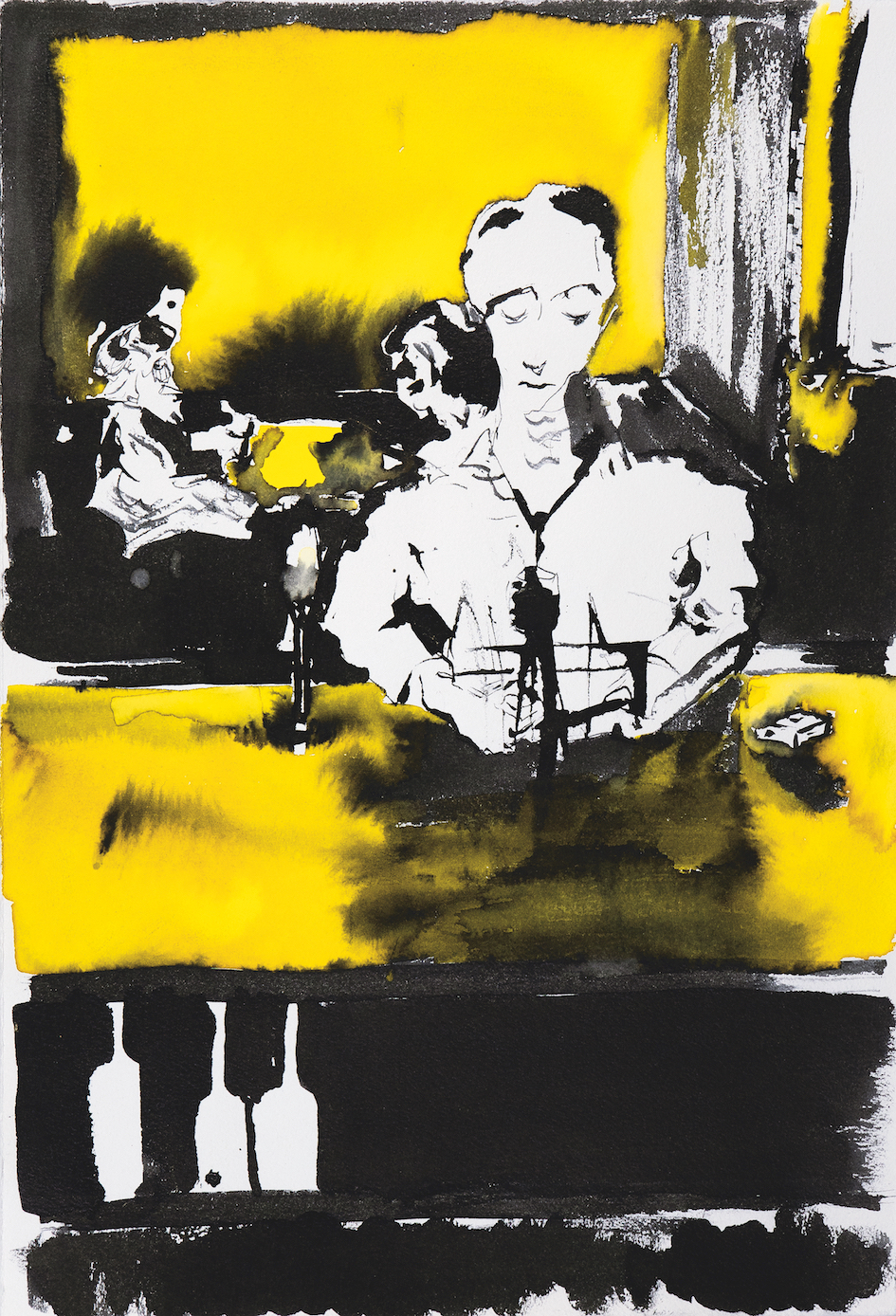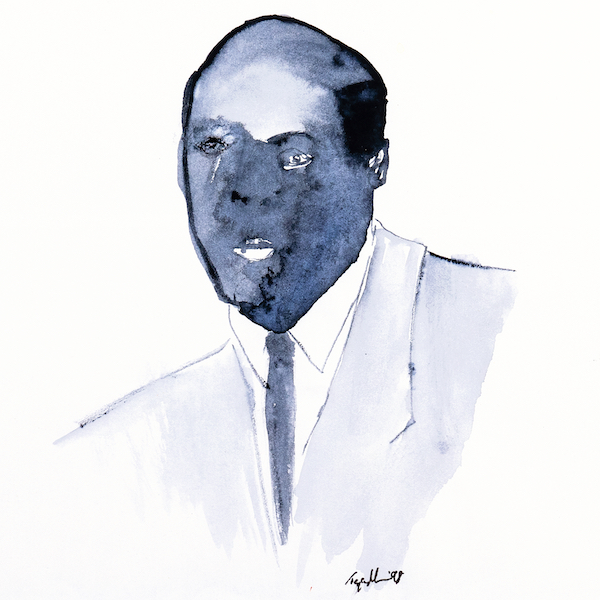Kåre Bulie (2019)
Alvor med smil bak
D2 Magasin 28/2/19
english version
Sometime around the turn of the millennium, Terje Nicolaisen (54) came up with an unusual proposal: a bulky device that would serve as a garbage container for artworks.
Over the drawing of the creature, Nicolaisen lured, as if it were an advertisement, with "new opportunities for you to throw art!" He argued with "the return of readymades to the real world" and "the safe treatment of auratic radiation from hazardous material".
The target group was "all bad artists". Nicolaisen's handling of the durable idea of the aura of art, its special radiance and value, is as striking as it is witty. The starting point for the garbage bin was that if you put many works by different artists together, “an uncontrollable auratic radiation, a potentially dangerous situation” could arise. Therefore, special measures are required - and who is better suited to implement them than someone who has a part in art's sought-after aura?
The ArtDisposalChamber, as this work is called, was for many years characteristic of Nicolaisen's art. He worked distinctly idea-oriented, with what he referred to as a proposal: a combination of text and drawing. They could be about anything from lighting up the entrance to a Hells Angels headquarters ("as a welcome or as a get-the-hell-out-of-here sign") to making far more extensive but equally original interventions in downtown Oslo.
In connection with the proposals, Nicolaisen himself has pointed out the short way from head or heart to paper. Very few of them have been realized, and the works are also ideas that are put into circulation, rather than plans that call for implementation.
The exceptions include the so-called Norsk Sokkel Award (Norwegian Continental Shelf Award sic.), an art prize Nicolaisen proposed and introduced - at the turn of the millennium. In his usual witty institutional-critical manner, he has distributed it to people who have supported his own career: a gallery, a colleague, a teacher.
When the artist had his first major museum exhibition, at the Henie Onstad Art Center in 2011, the art historian Ingvild Krogvig wrote in the catalogue that Nicolaisen with his proposals will "improve existing structures, create new facilities or stage social situations".
He is not the man of towering monuments.
Krogvig drew lines back to artists such as the German Joseph Beuys and the Swedish American Claes Oldenburg. Not least, she placed Nicolaisen in the tradition of the 1960s and 1970s conceptual art. Henie Onstad management filled inn the picture by calling him a "satirical commentator", a "one-man band" and - in good conceptual systematic spirit - a "very skilled bureaucrat".
Humour
First and foremost, Terje Nicolaisen is a very humourous artist. Typically, his work is among the very few I still remember from the recent Fall Exhibition (Høstutstillingen). Under the name "Untitled (Bad Painter)," he showed a picture of a barbarous, long-haired gentleman, with the irresistible inscription "He was the only bad painter for miles. Artists came to him for advice ».
I am always happy when I come across art which, in addition to being interesting to look at and reflect on, is genuinely entertaining. Still, the art institution's relationship with humor seems ambivalent at best. In an environment with few clear rules to navigate and similarly high levels of uncertainty, many seem to be much more concerned with appearing as so-called serious than as fun, as socially and politically engaged rather than as witty. Although the result is not so few boring works, the history of art also indicates that the seriousness has consistently been better off than the humor.
Nicolaisen has also remained an artist who is mainly known to a particularly interested audience. That he is currently publishing the book "No More Jokes" at the German art publisher KERBER, which is presented as an expression of a more "sincere" vein in the Norwegian, can therefore be read as an attempt to become more "serious". On the other hand, there is every reason not to take the words too seriously when they come from an artist of the Nicolaisen kind.
However, that does not mean that "No More Jokes" is primarily a dumb book, though of course - it has an element of the author's characteristic sense of humor. Rather, it is a summary of more than twenty years of systematic work on drawing and painting: 200 colourful pictures on paper, primarily of people and heads.
Artcritic Johanne Nordby Wernø, who has helped make the selection, points out in the publisher's preface that idolization can be "combined with irony, exposing his admiration and interest to others comes with vulnerability", and that this book, rather than the wit of previous works is dominated by "moods, use of colour, lines, painterly qualities and the artist's actual talent for form, colour and figurative richness".
Solstad
There is indeed a lush colourist who appears in these pictures, although titles such as "Untitled (fucking artist)" and "Untitled (because Tor is smoking)" help to remind us of what kind of artist we are dealing with. The art world is, as usual, well represented in Nicolaisen's work: With a series of "Sick artists", Henri Matisse, Sigmar Polke, Jakob Weidemann and Andrea Zittel are among those who perform by name. A "Self Portrait as Arne Ekeland" testifies to a particularly close relationship.
Also included are a number of portraits that express interest in both Norwegian and international fiction: Dag Solstad and Karl Ove Knausgård, Marianne Moore and Salman Rushdie. In addition, there are politicians - from Thorbjørn Jagland to Slobodan Milošević - and figures from pop culture, whether it be Princess Diana or the "Twin Peaks" figure Dale Cooper. Occasionally, text is included, but language plays a much smaller role in the works of the book than in the Proposals.
In other words, "No More Jokes" combines the near and far, the contemporary and the historical, the personal and the political. It has quite the touch of something more intimate, something darker and more melancholic. At the same time, the book has retained the energy that the seemingly fast and sketchy character has always given Terje Nicolaisen's works. The combination of humor and seriousness that the release represents, adds new dimensions to an artist that deserves more attention than he has received so far.
D2 - Kåre Bulie
